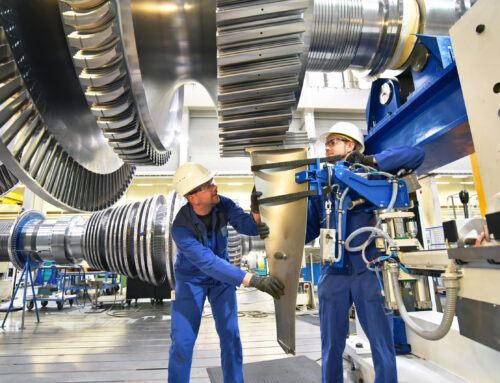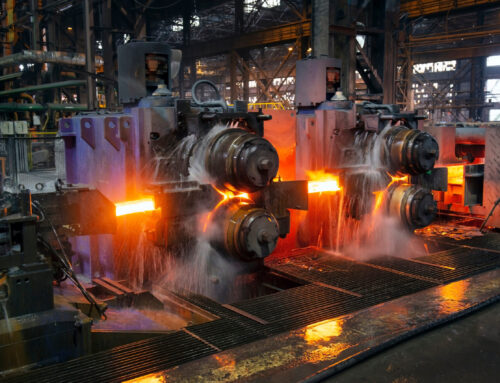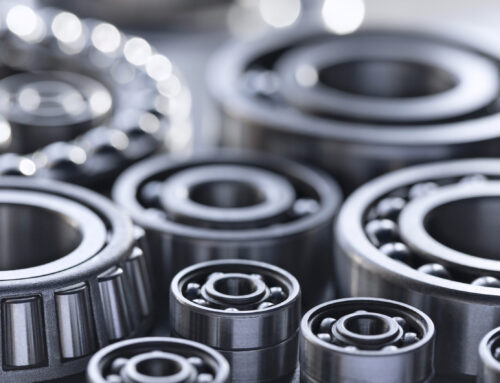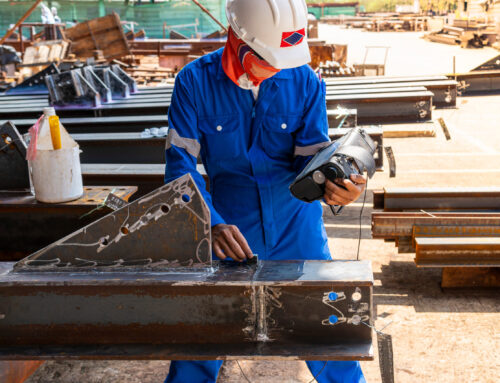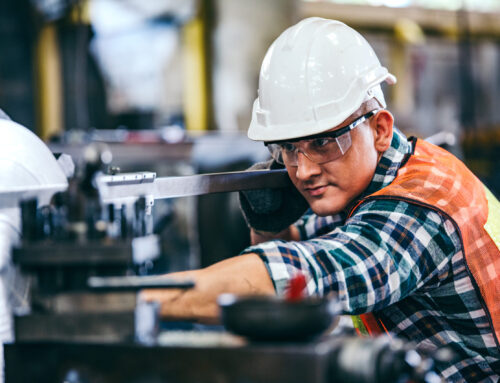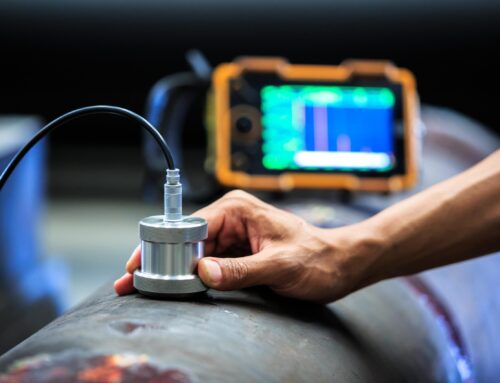
Protect bearings with the right accessories
Bearing life is not only about the bearing itself. It depends on the small parts surrounding it. Hydrogen seals keep contaminants out. Oil rings deliver lubricant where it is needed. RTDs and thermocouples track temperatures so you can respond before damage occurs. If you are comparing bearing accessories rtd thermocouple options, hydrogen seals, and oil rings, you are on the right path to boost uptime and prevent costly failures.
At Fusion Babbitting, we help operators choose and install the correct accessories for their Babbitt bearings and rotating equipment. We also repair, rebuild, and manufacture bearings that meet or exceed OEM standards. This guide explains how hydrogen seals, oil rings, RTDs, and thermocouples work together, what to consider when specifying them, and how Fusion Babbitting Co., Inc. supports reliable performance across demanding industries.
What each accessory does for your bearings
Hydrogen seals
Hydrogen seals are specialized sealing elements used on hydrogen-cooled generators and similar equipment. Their job is to contain hydrogen, prevent air and moisture from entering, and keep oil where it belongs. A good seal stabilizes the lubrication environment, reduces oxidation of the lubricant, and keeps abrasive particles away from the bearing surface. That stability protects the oil film that Babbitt bearings need to operate smoothly. When the seal fit, surface finish, and clearances are right, you reduce heat generation, vibration, and leakage. Poor seals do the opposite. They let contaminants in, allow gas to escape, and place the bearing at risk of wiping and fatigue.
Oil rings
Oil rings are gravity driven loops that dip into an oil reservoir and bring lubricant up onto the journal. They are simple and effective when sized and installed correctly. The ring must be round, balanced, and concentrically aligned. Incorrect width, rough edges, or out-of-round conditions can cause skidding, waviness, and intermittent lubrication. The result is metal-to-metal contact, local hot spots, and rapid wear. A well designed oil ring delivers a consistent oil film, stabilizes temperature, and reduces power loss. Materials and finishes also matter. Smooth, burr-free ring surfaces reduce drag and ensure uniform oil pickup.
RTDs and thermocouples
Temperature is the earliest and most reliable indicator of bearing health. RTDs and thermocouples are the most common sensors for bearings. An RTD, or resistance temperature detector, uses a metal element that changes resistance with temperature, providing stable and accurate readings across a moderate range. A thermocouple uses two dissimilar metals to generate a small voltage that corresponds to temperature, making it versatile for a wide range. Both help detect problems such as misalignment, loss of oil, contamination, or electrical issues long before you have audible noise or vibration alarms. Proper sensor selection, location, and wiring are essential. A sensor embedded near the babbitt surface reacts faster to film distress than one placed far from the load zone.
Why these accessories save bearings
Bearings fail when the oil film collapses, temperatures rise, or contamination damages the soft metal surface. Hydrogen seals, oil rings, RTDs, and thermocouples mitigate those risks. Working together, they form a preventive system that keeps the film intact, alerts you to small thermal changes, and blocks incoming dirt or moisture.
- Hydrogen seals limit ingress and leakage, preserving lubricant quality and pressure balance
- Oil rings maintain a steady oil film that separates rotating and stationary surfaces
- RTDs and thermocouples provide early warning when heat builds due to friction, inadequate flow, or process changes
- Accurate monitoring supports planned maintenance, not emergency shutdowns
- Improved reliability lowers total cost of ownership and protects critical assets
Specifying bearing accessories rtd thermocouple and more
Hydrogen seal selection factors
- Operating gas type and pressure
- Shaft diameter, surface finish, and runout
- Seal material compatibility with hydrogen and lubricant
- Thermal expansion and clearances across the operating range
- Ease of installation and service access
- Leakage testing and acceptance criteria
Oil ring selection factors
- Ring diameter, width, and weight relative to shaft size and speed
- Oil viscosity at operating temperature
- Reservoir depth to ensure consistent pickup without churning
- Ring roundness and surface finish to limit slip
- Guide features to maintain ring position on the journal
- Material choice for wear and corrosion resistance
RTD vs. thermocouple selection
- RTDs provide higher accuracy and stability for moderate temperature ranges
- Thermocouples cover a wider temperature range and are rugged in harsh environments
- Consider lead wire length and signal conditioning noise
- Choose sensor class and tolerance that match your alarm setpoints
- Select tip style and sheath material suitable for the bearing metal and lubricant
- Confirm your control system input card supports the sensor type
Best practices for installation and reliability
- Document shaft dimensions, seal housings, and oil ring clearances before installation
- Inspect hydrogen seal faces for flatness, surface defects, and correct elastomer condition
- Ensure oil ring roundness with runout checks and deburr all edges
- Confirm oil level, viscosity, and cleanliness before commissioning
- Place RTDs or thermocouples near the load zone but not so close that they restrict oil flow
- Route sensor leads away from electromagnetic interference and use shielded cable
- Calibrate temperature channels and validate alarms against a known heat source
- Log baseline temperatures at various loads to set realistic trip points
- Establish inspection intervals for seals and rings based on operating hours
- Train technicians on correct removal, reinstallation, and torque practices
How monitoring prevents failures
Temperature rises are often the first sign of a problem. A well placed RTD or thermocouple can detect a few degrees of change that signal oil starvation, misalignment, or contamination. Trend temperatures during startup, steady state, and shutdown. Look for step changes tied to process conditions. Correlate temperature with vibration and oil analysis. Many plants use trending to predict bearing degradation weeks in advance. This time allows you to schedule a controlled stop rather than suffer a catastrophic failure. Fusion Babbitting can help you choose the right sensor, install it properly, and interpret the data for practical maintenance actions.
Common failure modes these accessories help avoid
- Lubrication starvation due to improper oil ring engagement
- Thermal runaway from blocked oil passages
- Contamination from poor seal performance leading to abrasive wear
- Wiping of Babbitt due to localized hot spots
- Excessive leakage causing pressure imbalance in hydrogen cooled systems
- False trips or missed alarms caused by incorrect sensor placement or wiring
Industries and applications that benefit
We see strong benefits from hydrogen seals, oil rings, RTDs, and thermocouples across many sectors that rely on large rotating equipment. Fusion Babbitting supports these needs nationwide with 24 hour emergency service.
- Aluminum mills
- Cement and chemical plants
- Fossil and nuclear power plants
- Hydro and pump storage
- Marine repair and shipyards
- Mines and steel mills
- Motor repair shops
- Paper mills
- Crushed stone producers
Typical applications include electric motors, hydro turbines and generators, pumps, and steam turbines. Any equipment with fluid film bearings will gain life and reliability from quality accessories and effective monitoring.
Fusion Babbitting capabilities that protect your investment
Since 1988, Fusion Babbitting Co., Inc. has specialized in Babbitt bearing repair, rebabbitting, rebuilding, reverse engineering, and custom manufacturing. Based in Milwaukee, Wisconsin, and serving the entire United States, we combine advanced machinery with experienced craftsmen to restore performance and extend equipment life.
- Repair, rebabbitting, and rebuilding that meet or exceed OEM specifications
- Centrifugal casting for strong bond strength using certified Babbitt alloys
- Arc flame spray application to restore worn surfaces to original dimensions
- Reverse engineering to reproduce obsolete bearings with accurate drawings
- General fabrication and machining up to 120 inches in diameter and length
- New manufacturing for OEM grade custom bearings
With more than 40 years of combined expertise, Fusion Babbitting delivers precise fits, correct clearances, and smooth finishes that bearings require for a long life. Our team can also help you select and integrate the right hydrogen seals, oil rings, RTDs, and thermocouples to complement your rebuild or new build. The result is reliable equipment, improved efficiency, and confidence in your maintenance plan.
Materials and methods that matter
Babbitt bearings depend on the bond between the liner and the backing. Fusion Babbitting uses centrifugal casting to create a uniform, high integrity bond that resists thermal cycling and dynamic loads. Certified Babbitt materials ensure consistent composition and mechanical properties. Machining to tight tolerances provides the correct geometry for hydrodynamic film formation. When pairing these bearings with hydrogen seals and oil rings, we verify clearances and concentricity so the lubrication system performs as designed. For RTDs and thermocouples, we provide precise pockets and passages that put the sensor near the critical zone without restricting oil flow. These details turn a good design into a dependable one.
When to replace or upgrade accessories
- Hydrogen seals with visible scoring, hardened elastomers, or increased leakage should be replaced
- Oil rings that wobble, show flattening, or cause intermittent oil pickup need correction or replacement
- RTDs and thermocouples that drift, show noise, or respond slowly should be verified and replaced if out of tolerance
- Any accessory incompatible with new lubricant viscosity or operating temperature should be upgraded
- During bearing rebuilds, evaluate all accessories and replace questionable components to avoid repeat downtime
FAQs on bearing accessories rtd thermocouple choices
How do I decide between an RTD and a thermocouple for my bearing?
Choose an RTD for higher accuracy and stability in moderate temperature ranges and when long term trending is critical. Choose a thermocouple for higher temperature ranges, faster response in harsh environments, or when your control system already standardizes on thermocouples. Fusion Babbitting can help you match the sensor to your process and monitoring hardware.
What causes oil rings to fail?
Common causes include incorrect ring size, out of round conditions, burrs, improper oil level, or oil that is too viscous for the operating temperature. Poor alignment and vibration can also disturb ring motion. A quick inspection and measurement during maintenance can prevent most issues.
Why are hydrogen seals important even if I do not see visible leakage?
Even small leakage can change gas purity and pressure, which affects cooling performance and lubricant condition. Over time this leads to higher temperatures and lower bearing life. A properly maintained seal protects internal environments and stabilizes performance.
Where should I place the temperature sensor in a Babbitt bearing?
Place the sensor as close as practical to the load zone without blocking oil flow. Many designs use a pocket near the bearing midplane or outlet. The goal is fast response to changes in oil film temperature. Fusion Babbitting can produce accurate pockets during rebuilds to position sensors correctly.
How Fusion Babbitting supports fast turnarounds
Downtime is costly, so we offer 24 hour emergency service. Our facility at 4540 W. Burnham St., Milwaukee, WI 53219 is equipped to handle large components up to 120 inches in diameter and length. We maintain a strong supply chain for certified materials, which helps shorten lead times. Whether you need a quick rebabbitting, a reverse engineered replacement, or an accessory upgrade, Fusion Babbitting works to get you back online quickly and safely.
Steps to improve bearing reliability today
- Identify bearings critical to production and list their accessories
- Verify hydrogen seal condition and leakage rates
- Inspect oil rings for roundness, surface finish, and proper oil level
- Audit RTD and thermocouple placements, wiring, and calibration
- Trend baseline temperatures at various loads and set alarms with reasonable margins
- Schedule a Fusion Babbitting assessment to plan repairs, upgrades, or replacements
Why choose Fusion Babbitting
We are more than a bearing repair shop. Fusion Babbitting provides engineering support, precise manufacturing, and practical guidance on accessories that protect your investment. Our experience spans aluminum mills, cement plants, fossil and nuclear facilities, hydro power, marine repair, mines, steel mills, motor repair shops, paper mills, shipyards, and crushed stone producers. We understand the operating environment and tailor solutions to your equipment and schedule.
Request a quote or technical review
Ready to improve reliability with the right bearing accessories rtd thermocouple setup, hydrogen seals, and oil rings? Contact Fusion Babbitting for a fast quote or a technical review. We are located at 4540 W. Burnham St., Milwaukee, WI 53219. Call 414.645.5800 or toll free at 800.613.5118. Email sales@fusionbabbitting.com. Our team will help you select parts, plan repairs, and deliver proven results.
Conclusion
Hydrogen seals, oil rings, RTDs, and thermocouples may look simple, yet they have an outsized impact on bearing life. With the right selection, installation, and monitoring, these accessories protect the oil film, control heat, and prevent contamination. Fusion Babbitting brings decades of bearing expertise, certified materials, and precision processes to ensure your equipment runs efficiently and reliably. Reach out today to discuss your application, compare options, and secure a solution that saves bearings and boosts uptime.

